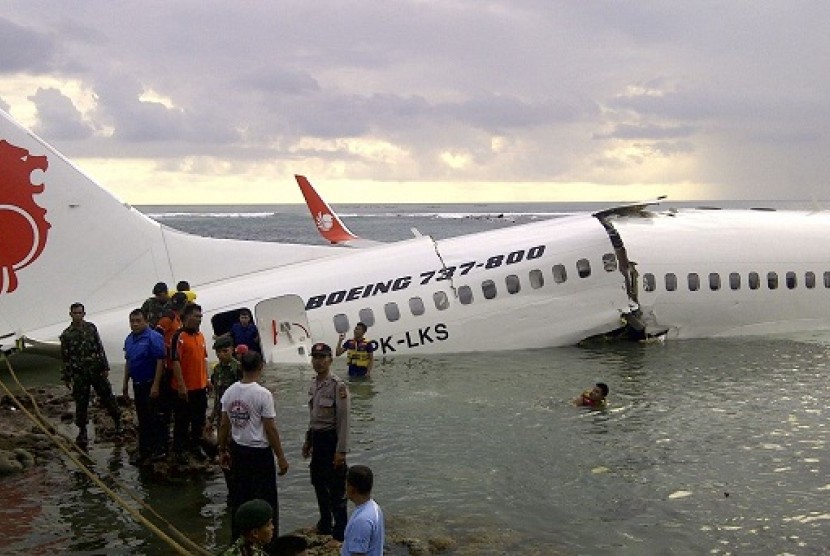REPUBLIKA.CO.ID, KUTA - Urine and blood tests of Lion Air`s pilot and co-pilot whose plane landed in shallow water before reaching the runway of Ngurah Rai airport in Denpasar, Bali, last Saturday (April 13), showed negative results, official said.
"Both pilot and co-pilot`s tests show they didn`t use drug when the crash happened," the Transportation Ministry`s Director General for Air Transportation Herry Bakti said here on Sunday.
He said further tests will be conducted on the pilot Mahlup Ghozali and co-pilot Chirag Carla. While waiting for the results of investigation, both pilot and co-pilot are not allowed to work for two weeks.
An investigation team of the Indonesian National Committee for Transportation Safety (KNKT) has arrived in Bali to investigate the tragic accident along with investigation to be carried out by the air transportation directorate.
Indonesian investigators on Sunday began working to determine what caused a new Lion Air passenger jet to miss a runway while landing on the resort island of Bali. The pilot and co-pilot will be grounded for two weeks for tests to ensure they were healthy during the flight and for questioning by investigators. They also have undergone alcohol and drug testing, and the preliminary results were negative, Herry Bakti Gumay, a Transportation Ministry official, told a news conference Sunday. In the past two years, three pilots, one co-pilot and a flight attendant from Lion Air have been arrested for illicit drug use.
Given that the aircraft was new, Sydney-based aviation expert Tom Ballantyne said a technical or mechanical problem would seem unlikely. He said it was fortunate that the plane landed flat in shallow water rather than nose-diving or hitting deep water, where it could have quickly been submerged.
"I'm surprised. The airplane split in two upon impact," he said, estimating it was likely traveling close to 300 miles (483 kilometers) per hour.
"It was coming into land and hit the water very hard. It's a miracle nobody was killed," Ballantyne said.
It was unclear whether human error may have played a role in the accident, and Sirait said the pilot was experienced, logging 10,000 flying hours. However, Indonesian aviation analyst Ruth Simatupang, a former investigator at the National Safety Transportation Committee, suspects some sort of miscalculation involving the landing.
"Something was obviously wrong with the pilot, and wind shear is a possibility that could lead to an unstable approach," he said. Sudden changes in wind speed or direction can lift or smash aircraft into the ground during landing.


